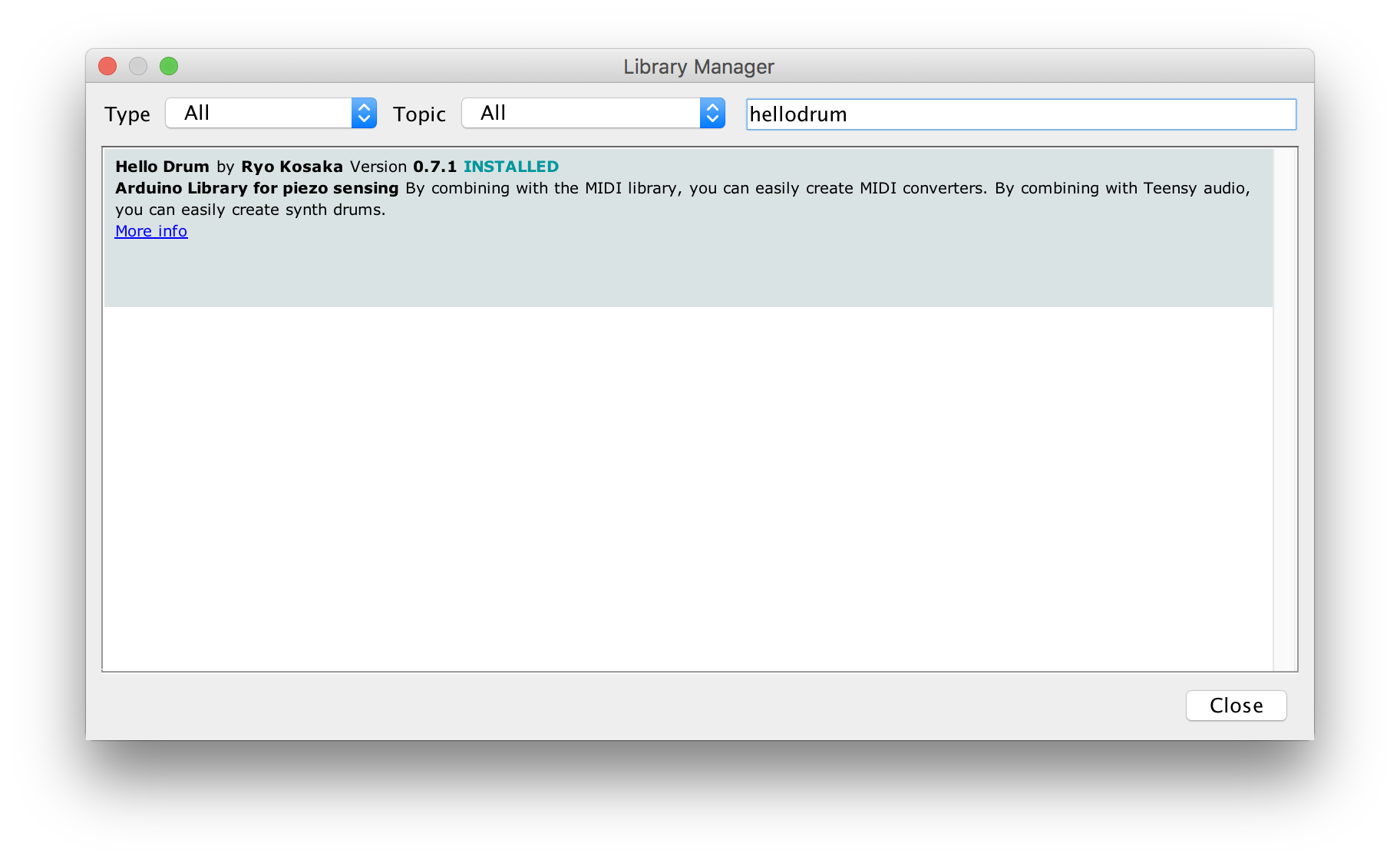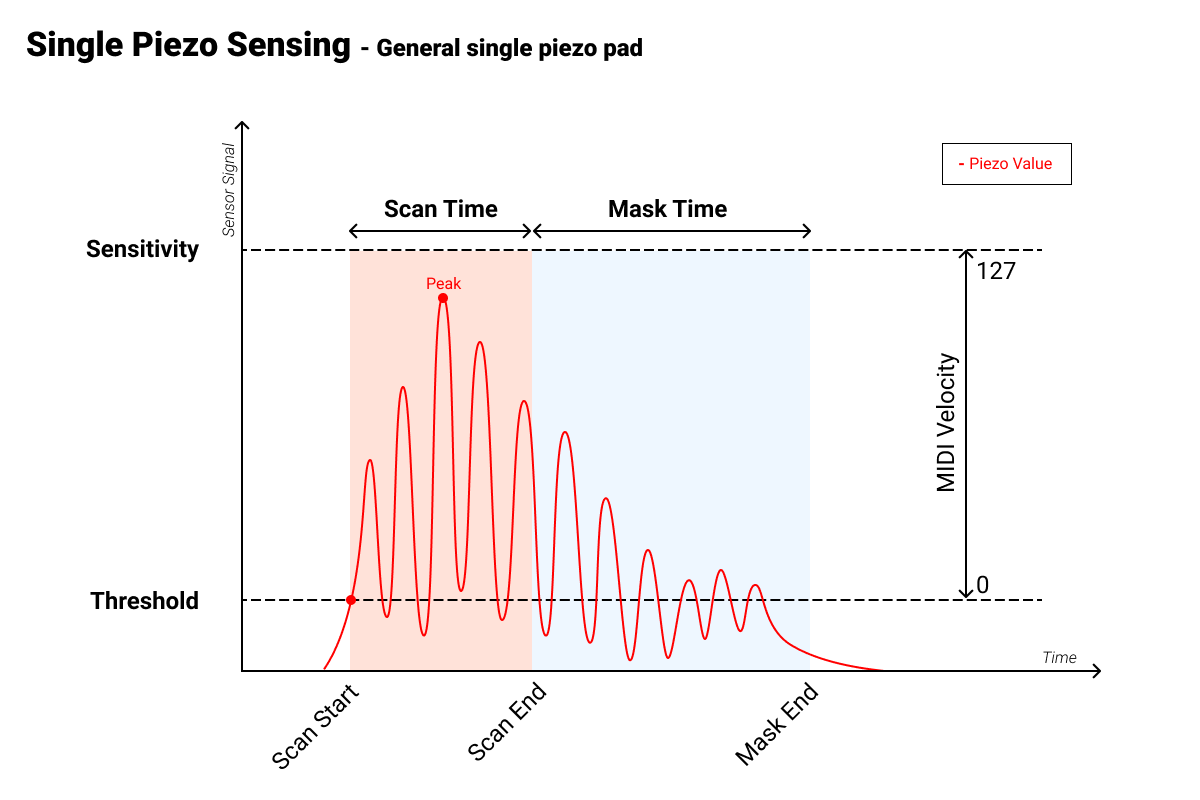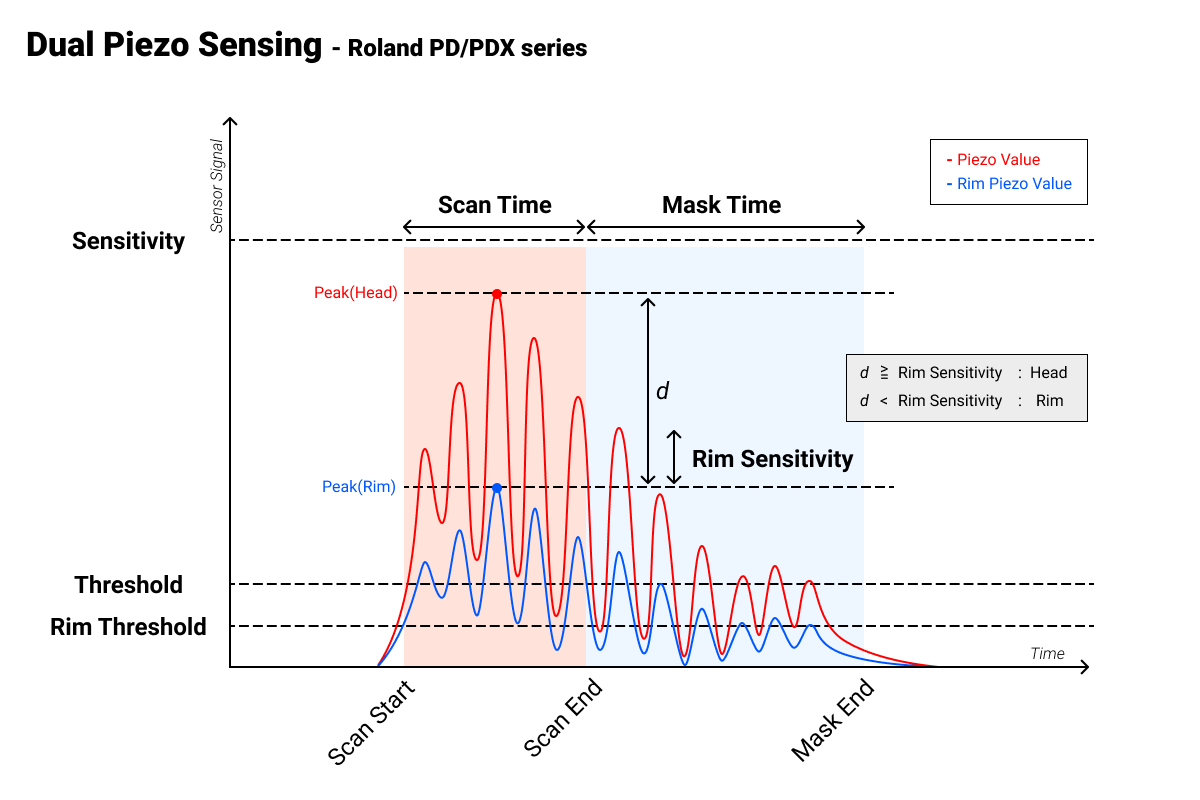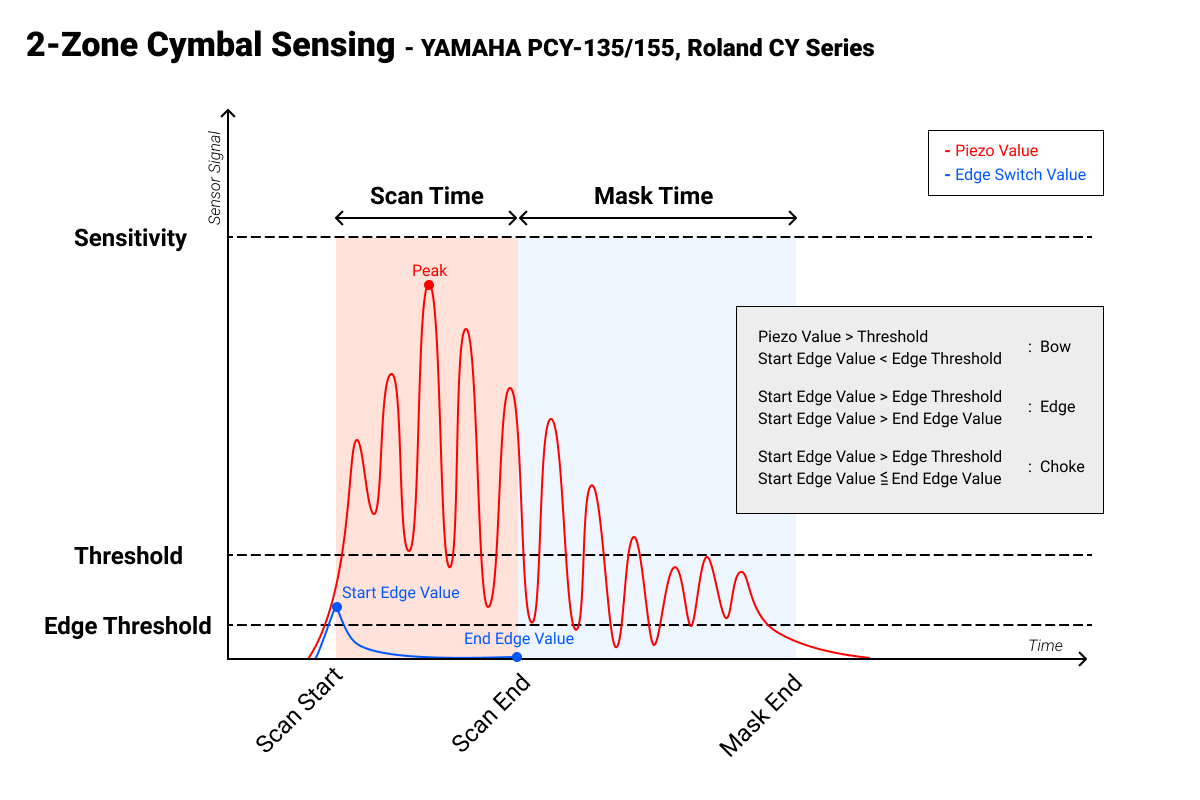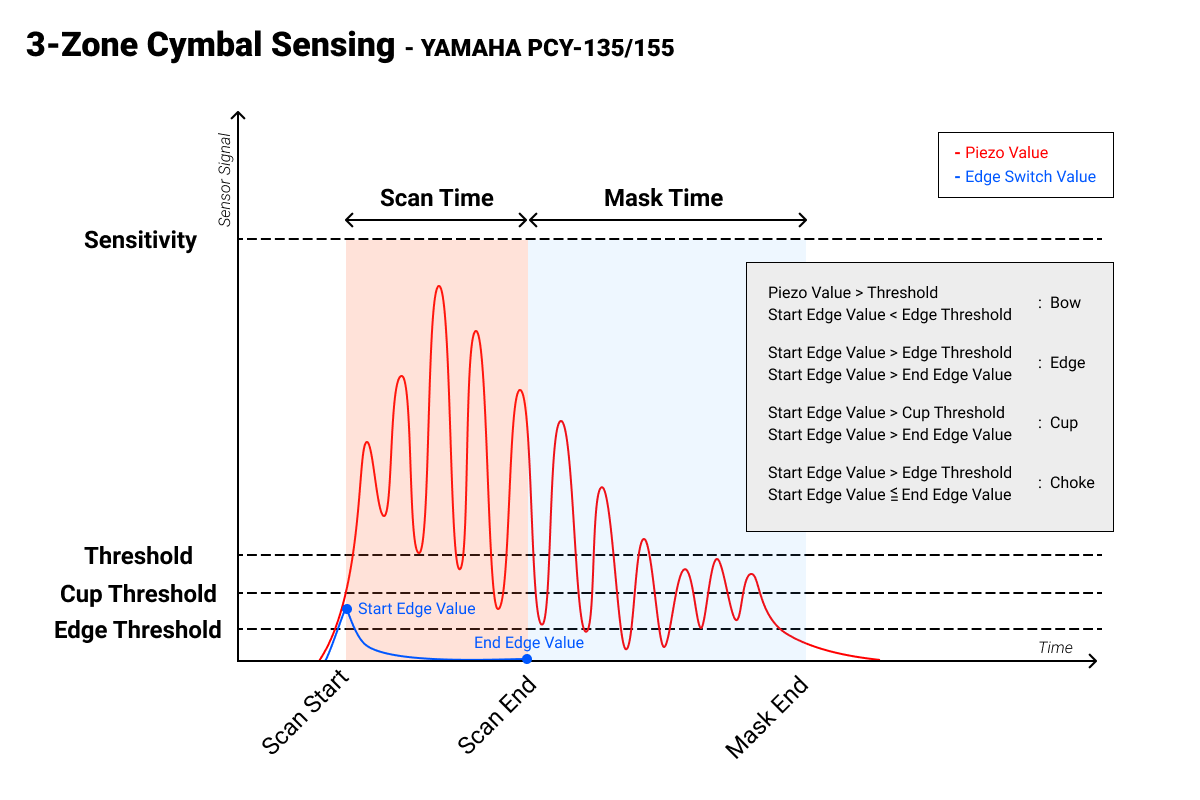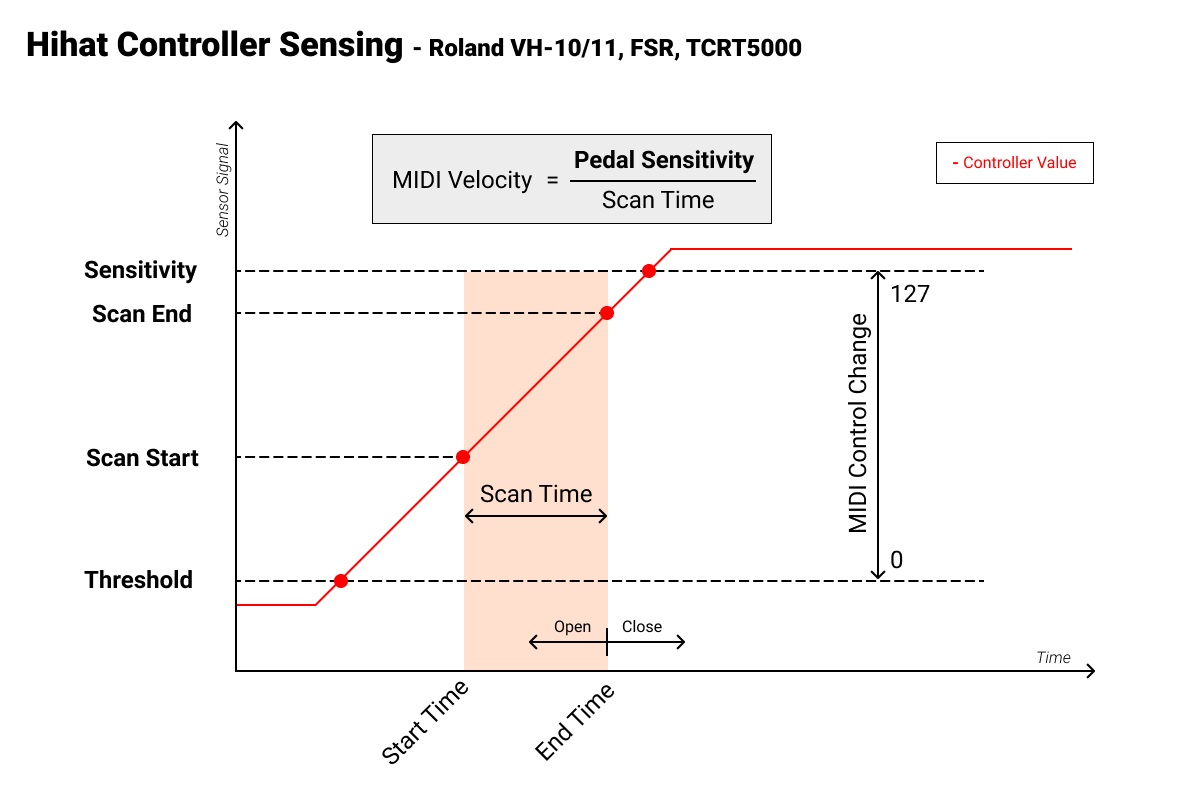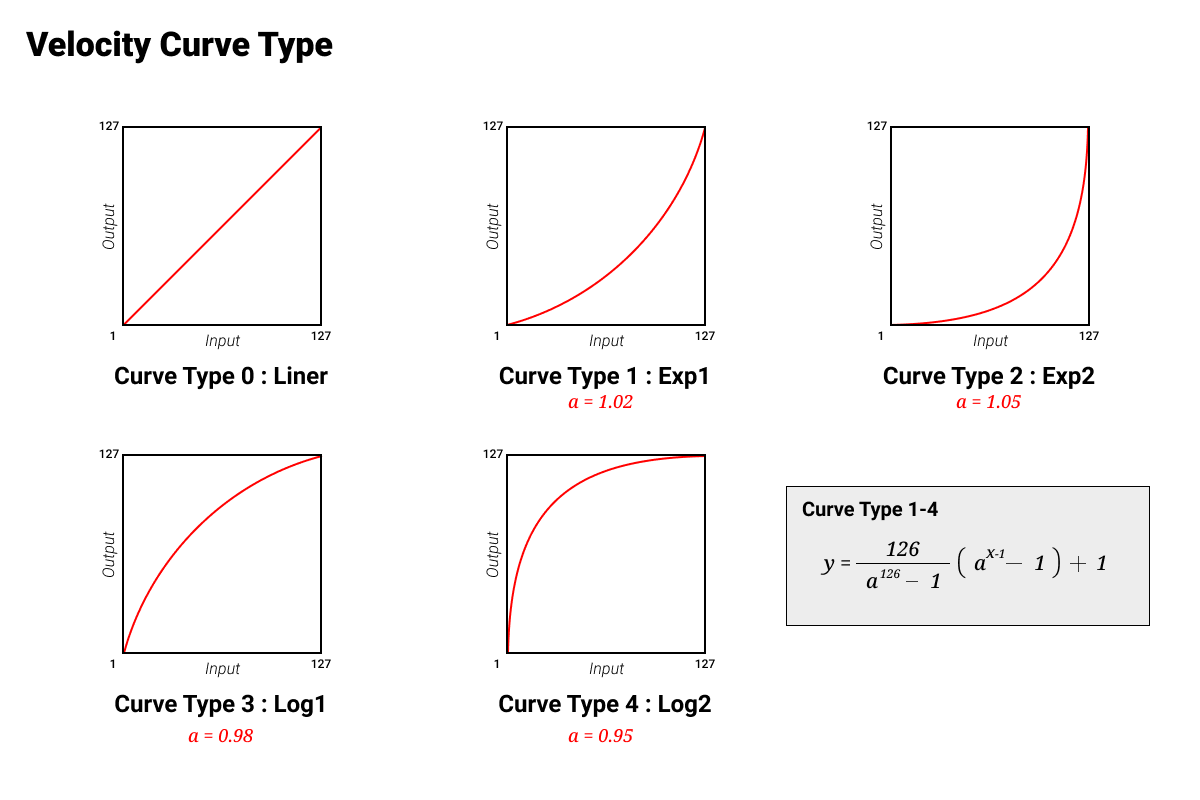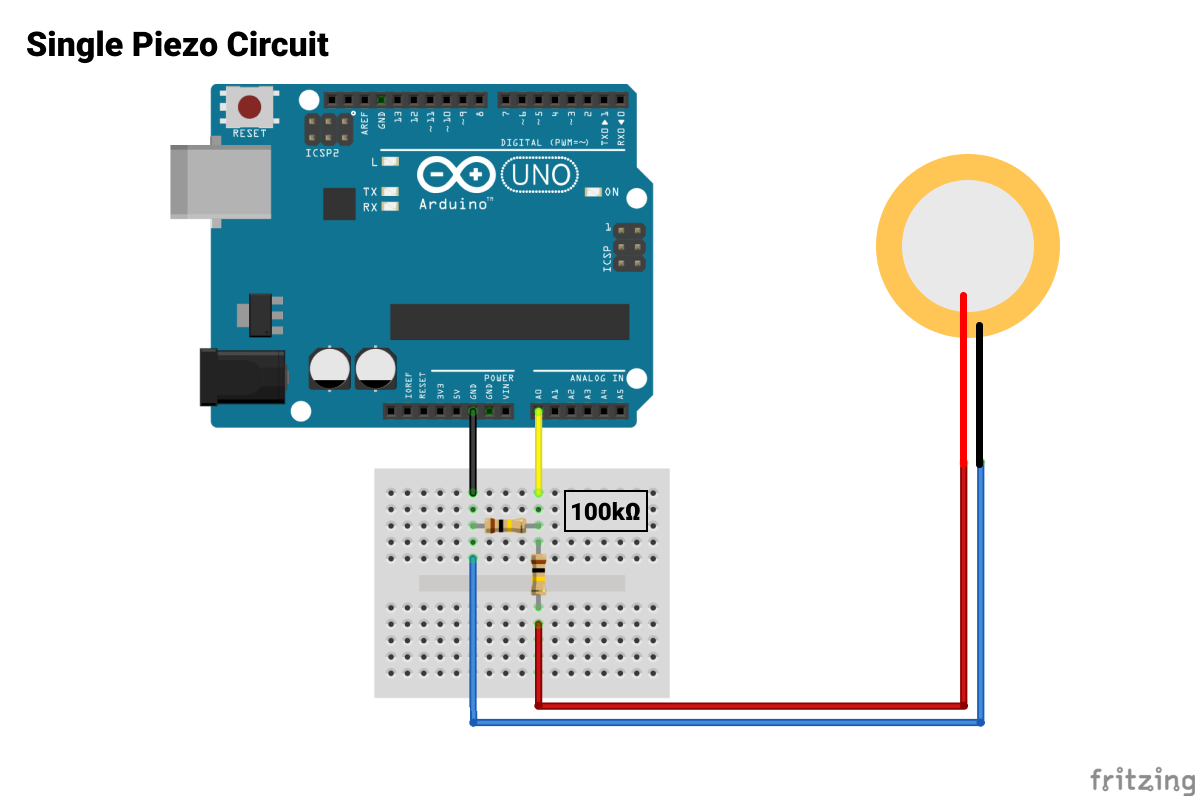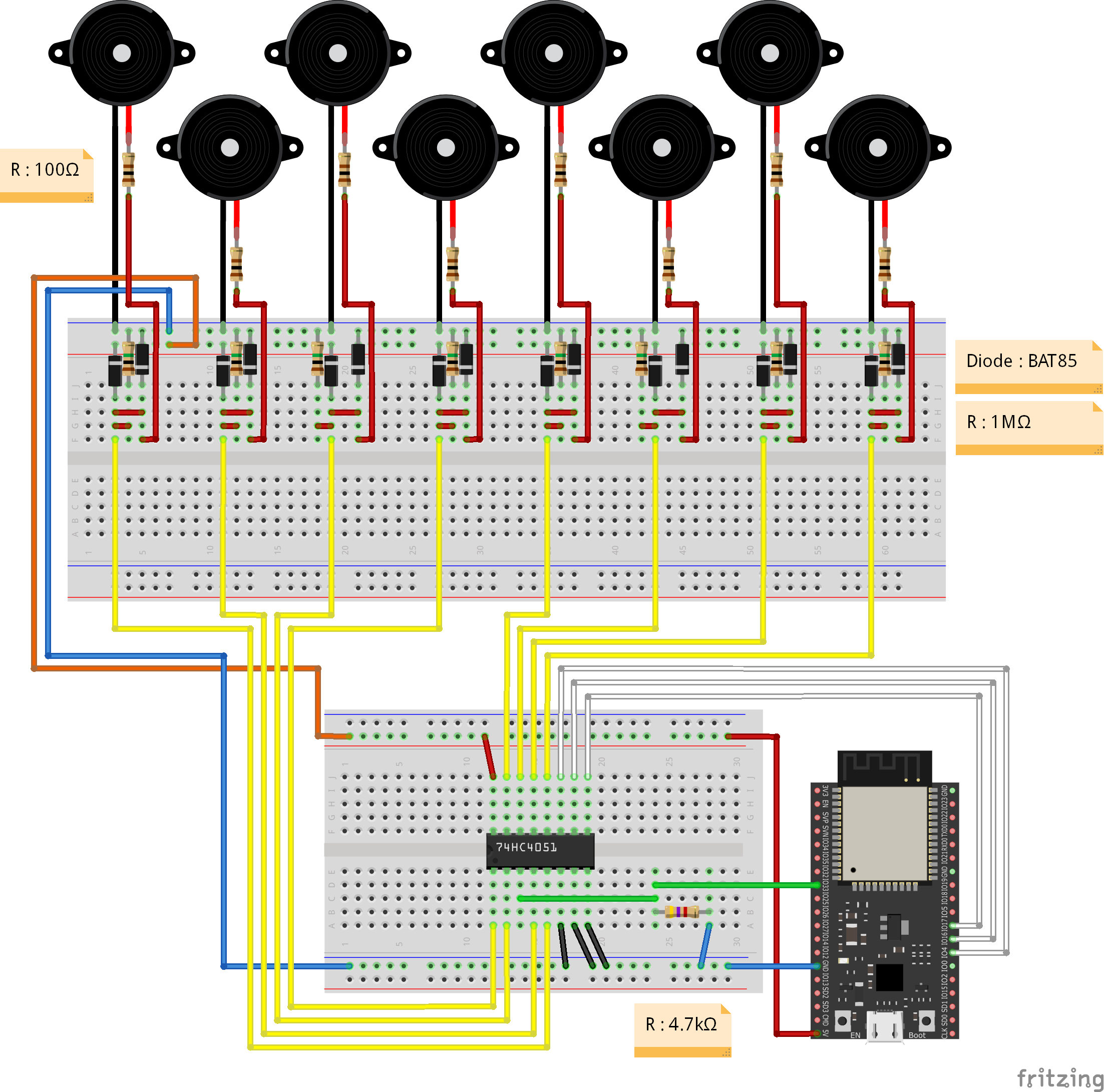This is a library for making E-Drum with Arduino.
Ver.0.7.6(5/1/2020) Work in progress.
This is a library for making E-Drum with Arduino.
By using it with Arduino MIDI Library, you can make E-drum.
Project Page :https://open-e-drums.com/
Blog :https://open-e-drums.tumblr.com/
YouTube :https://www.youtube.com/channel/UCNCDcIO26xL_NhI04QY-v4A
3D Models of Pad :https://www.thingiverse.com/RyoKosaka/designs
This software is an alpha version, and is unsupported. Use at your own risk.
- Single piezo pad, Dual piezo pad, 2-Zone cymbal, 3-Zone cymbal
- Compatible with Roland's 2 zone pads (PD Series)
- Compatible with YAMAHA's 3 zone cymbal(PCY135/PCY155) and Roland's 2 zone cymbals(CY12C/CY5/CY8)
- Compatible with SoftPot, FSR and Optical(TCRT5000) type hi-hat controllers and Roland's hihat(VH10/VH11)
- Sensing with MUX(4051 and 4067)
- Setting mode with LCD or OLED
- Setting mode with LCD Keypad Shield (DFRobot, HiLetgo)
- Sensitivity, Threshold, Scan Time, Mask Time, Note Number, Velocity Curve can be set with each pad
- Save setting values with EEPROM
- Works with ESP32 and Teensy and AVR boards such as UNO and MEGA.
- Install
Use Arduino's Library Manager to install the library. Search for “hellodrum ”.
If you use MIDI, also install the MIDI Library.
-
Initialize EEPROM
If you want to use EEPROM to store the settings, you will need to initialize the EEPROM. Please write the sample code, example > EEPROM > InitializeEEPROM > InitializeEEPROM.ino, to your Arduino. Once it's written, the initialization is complete. -
Coding:
#include <hellodrum.h> #include <MIDI.h> MIDI_CREATE_DEFAULT_INSTANCE(); //Please name your piezo. //The piezo named snare is connected to the A0 pin HelloDrum snare(0); //Setting byte SNARE[6] = { 80, //sensitivity 10, //threshold 20, //scantime 20, //masktime 38, //note 1 //curve type }; void setup() { MIDI.begin(10); snare.setCurve(SNARE[5]); //Set velocity curve } void loop() { //Sensing snare.singlePiezo(SNARE[0], SNARE[1], SNARE[2], SNARE[3]); //(sensitivity, threshold, scantime, masktime) //Sending MIDI signals if (snare.hit == true) { MIDI.sendNoteOn(SNARE[4], snare.velocity, 10); //(note, velocity, channel) MIDI.sendNoteOff(SNARE[4], 0, 10); } }
-
Coding (MUX):
#include <hellodrum.h> #include <MIDI.h> MIDI_CREATE_DEFAULT_INSTANCE(); //Define MUX Pins HelloDrumMUX_4051 mux(2,3,4,0);//D2, D3, D4, A0 //Please name your piezo. //The piezo named snare is connected to MUX 0 pin HelloDrum snare(0); //Setting byte SNARE[6] = { 80, //sensitivity 10, //threshold 20, //scantime 20, //masktime 38, //note 1 //curve type }; void setup() { MIDI.begin(10); snare.setCurve(SNARE[5]); //Set velocity curve } void loop() { //scanning all pin of mux mux.scan(); //Sensing snare.singlePiezoMUX(SNARE[0], SNARE[1], SNARE[2], SNARE[3]); //(sensitivity, threshold, scantime, masktime) //Sending MIDI signals if (snare.hit == true) { MIDI.sendNoteOn(SNARE[4], snare.velocity, 10); //(note, velocity, channel) MIDI.sendNoteOff(SNARE[4], 0, 10); } }
- Single Piezo Sensing
- Sensitivity (1 - 100)
- Threshold (1 - 100)
- Scan Time (1 - 100) milliseconds
- Mask Time (1 - 100) milliseconds
- Velocity Curve Type (0 - 4)
- Dual Piezo Sensing
- Sensitivity (1 - 100)
- Threshold (1 - 100)
- Scan Time (1 - 100) milliseconds
- Mask Time (1 - 100) milliseconds
- Rim Sensitivity (1 - 100)
- Rim Threshold (1 - 100)
- Velocity Curve Type (0 - 4)
- 2-Zone Cymbal Sensing
- Sensitivity (1 - 100)
- Threshold (1 - 100)
- Scan Time (1 - 100) milliseconds
- Mask Time (1 - 100) milliseconds
- Edge Threshold (1 - 100)
- Velocity Curve Type (0 - 4)
- 3-Zone Cymbal Sensing
- Sensitivity (1 - 100)
- Threshold (1 - 100)
- Scan Time (1 - 100) milliseconds
- Mask Time (1 - 100) milliseconds
- Edge Threshold (1 - 100)
- Cup Threshold (1 - 100)
- Velocity Curve Type (0 - 4)
- Hihat Controller Sensing
- Sensitivity (1 - 100)
- Threshold (1 - 100)
- Scan Start (1 - 100)
- Scan End (1 - 100)
- Pedal Sensitivity (1 - 100)
- Velocity Curve Type (0 - 4)
- Velocity Curve Type
- Single Piezo
- Single Piezo with Potentiometer
- Dual Piezo
- Roland PD series
- FSR
- Roland VH-10/VH-11
- TCRT5000
- Cymbals
- Roland PD-8
- Button
- LCD Keypad Shield
- Arduino UNO with MUX
- ESP32 with MUX
The STL data of pads from 6 inches to 12 inches, hi-hat controllers(https://www.thingiverse.com/RyoKosaka/designs)
- 0.7.6
- Bug fix for LCD and buttons
- Add and Update sample codes
- 0.7.5
- Bug fix for ESP32
- Bug fix for hihatControl()
- Update sample codes
- Add pullup mode to deal with floating pins (Beta)
- Add debug mode
- 0.7.4
- Add velocity curve function
- FSR() and TCRT5000() integrated into hihatControl()
- Update circuits
- Add circuit images
- Update sensing algorithm
- Add sensing figure
- Update sample code
- Organize the source code
- 0.7.3
- Update variables type
- Add button function for LCD keypad shield
- Add sample code "lcdShield.ino" for LCD keypad shield
- 0.7.2
- Update sample code
- Add Knob function
- Add sample code for Teensy
- 0.7.1
- Sensing with 16ch MUX(4067) is available
- Update sample code
- Organize folders and files
- Add library.properties
- Teensy3.2 has been tested
- 0.7.0
- Improved sensing
- Dual Piezo sensing available (Test)
- ESP32 EEPROM available
- Setting mode with I2C LCD or I2C OLED available
- Add sample code
- 0.6.0
- Sensing with MUX(4051) is available
- Add BLE MIDI sample code with ESP32
- Hihat Contorller with FSR is available
- 0.5.0
- Setting mode available
- Display function by LCD is available
- Saving function of setting items by EEPROM is available
- Improved sensing of TCRT 5000 hi-hat controller
- 0.1.0
- Work in progress
- rimGain
- retriggerCancel
- rotaryEncoder
